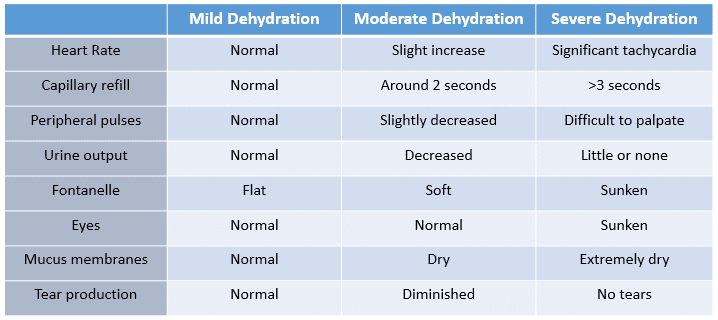Hypovolemic shock: what are the signs to look out for?
Hypovolemic shock is characterized by an acute decrease in intravascular volume. The main causes include external or internal blood loss, loss of body fluids other than blood, and excessive vasodilation of peripheral vessels which stores blood in small vessels. The clinical presentation is above all dominated by the presence of signs of tissue hypoperfusion: lethargy, confusion, or even cold, clammy, bluish and pale skin. The primary objective of treatment is to rapidly restore systemic arterial pressure and cardiac output by normalizing the circulating blood volume.
What is hypovolemic shock?
Hypovolemic shock is characterized by a decrease in circulating blood mass, which results in decreased venous return and oxygen transport to tissues. This is because the resulting low blood pressure causes a lower than normal amount of blood to enter the heart with each heartbeat and, as a result, an insufficient amount of blood ejected to the body and its cells. . Unless it is compensated by an increase in heart rate, cardiac output decreases.
What are the causes of hypovolemic shock?
External or internal blood loss
Bleeding is frequently involved. This can result from:
- trauma;
- surgery;
- a peptic ulcer;
- esophageal varices;
- a ruptured ectopic pregnancy (pregnancy that takes place outside the womb);
- a ruptured aortic aneurysm.
Loss of body fluids other than blood
Hypovolemic shock can also result from increased loss of body fluids other than blood due to the following factors:
- extensive major burns;
- edema;
- inflammation of the pancreas (pancreatitis);
- perforation of the intestinal wall;
- severe diarrhea or vomiting;
- certain kidney problems;
- excessive use of diuretics, which increase urine output;
- untreated diabetes.
Insufficient fluid intake
Hypovolemic shock may be due to insufficient fluid intake, with or without increased fluid loss, following:
- a lack of water, especially in the event of a heat wave;
- a neurological handicap that can alter the mechanism of thirst, such as Alzheimer’s disease;
- a physical disability that prevents drinking, even when you are thirsty, such as severe joint disease.
Vasodilatation excessive
The excessive vasodilation of peripheral vessels which stores blood in small vessels or “relative hypovolemia” results from an increase in the capacity of the vascular system, for example following a massive release of histamine (anaphylactic shock) or to following a decrease in the quantity of oxygen (anoxia) in the vasoconstrictor muscles, during the release of a tourniquet for example.
What are the symptoms of hypovolemic shock?
In the initial stages of hypovolemic shock, many symptoms may be absent or go unnoticed if not specifically looked for. In older people, confusion may be the only symptom. Urine production may be reduced, as the blood supply to the kidneys is reduced, and waste products may build up in the blood. Blood pressure may be low.
Symptoms of hypovolemic shock are as follows:
- the disorder may begin with lethargy (deep and prolonged sleep), drowsiness and confusion;
- the skin becomes cold and clammy, and often bluish and pale;
- under the pressure of the finger, it returns to its normal color more slowly than usual;
- blood vessels may become more visible and appear as a network of bluish lines under the skin;
- the person usually cannot stand up without feeling dizzy or passing out;
- breathing is rapid;
- blood pressure decreases to the point where it is difficult to measure with a blood pressure monitor;
- urination decreases and then eventually disappears;
- the person may fall into a coma and die.
If the state of shock is related to excessive vasodilation, the symptoms are slightly different:
- the skin may be hot and red;
- the pulse may be strong and vigorous rather than weak, especially at first.
Second, the state of shock due to excessive dilation of the blood vessels also results in cold, clammy skin and lethargy.
How to treat hypovolemic shock?
The speed of intervention is very important in hypovolemic shock. This is because when left untreated, shock is usually fatal. If shock is treated, the prognosis depends on:
- the cause of the state of shock
- other disorders presented by the person;
- the presence and severity of possible organ failure;
- the time elapsed before the start of treatment;
- the type of treatment administered.
Treatment
The challenge is to maintain oxygen transport. The most important thing is to get help and stop any major bleeding. Then the person can lie down and should keep warm, with the legs elevated.
Upon arrival, emergency medical personnel can administer oxygen through a mask or insert a breathing tube. As the therapeutic emergency is the restoration of the venous return in order to ensure a sufficient perfusion pressure thus limiting the risk of disturbances of cellular oxygenation (dysoxia) at the level of the organs, the treatment is based on an early and aggressive vascular filling compound from:
- crystalloids such as physiological saline (0,9% NaCl) and Ringer’s fluid;
- colloids such as albumin or hydroxyethyl starch (HEA) solution.
Upon arrival at the emergency department, the person may receive a blood transfusion if the shock is caused by bleeding. Blood group compatibility is usually checked before a transfusion, but in an emergency time may be lacking and type O negative blood may then be donated. When the shock is caused by bleeding, surgery may be needed to stop the bleeding. For certain types of shock,
Medicines can be given intravenously to increase blood pressure such as:
- adrenaline or norepinephrine, which helps constrict blood vessels;
- dobutamine or milrinone, which increase the heart’s ability to pump blood.










